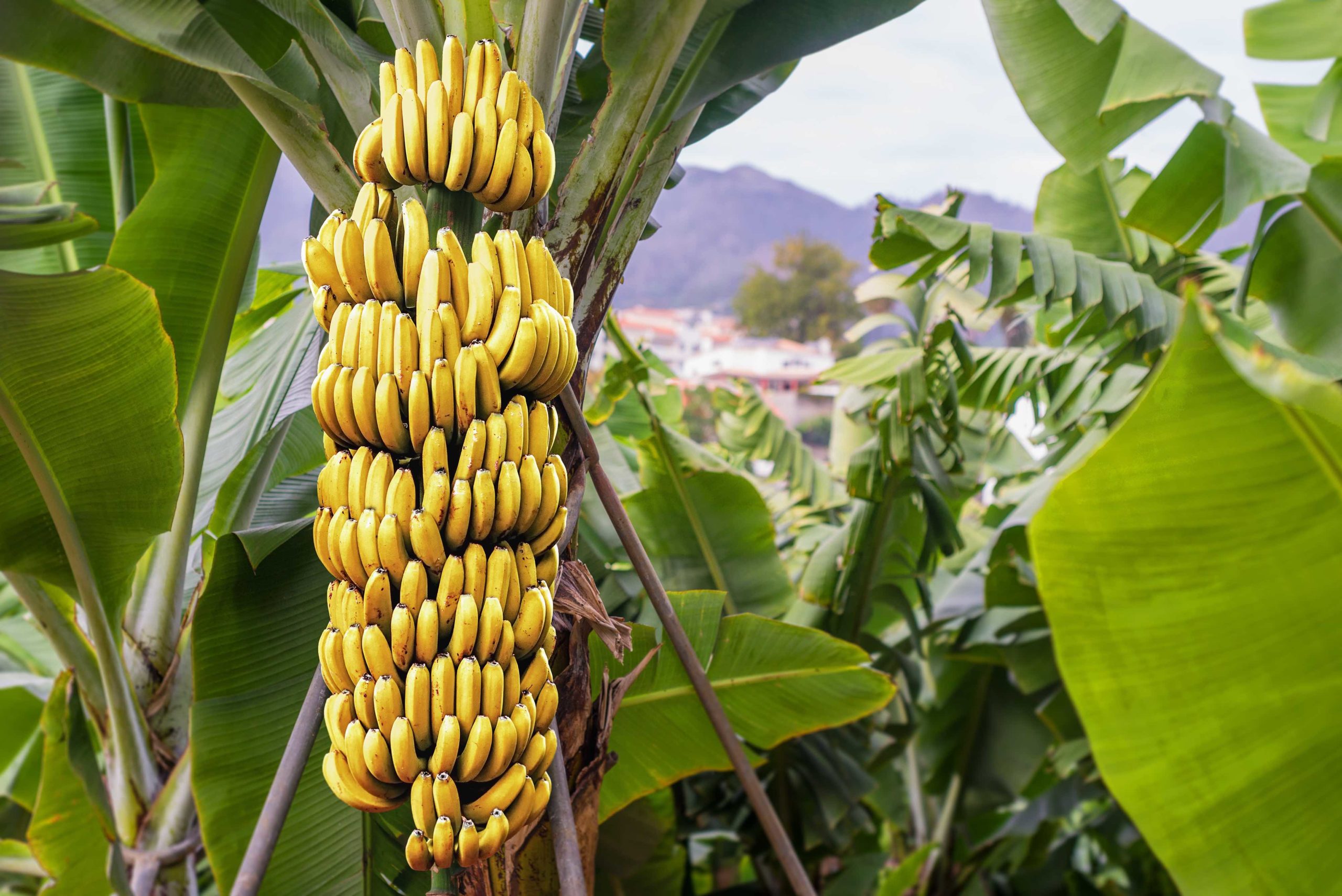Banana production in Africa has become a pivotal force in both local economies and global agriculture. This article explores the significance of banana cultivation on the continent, highlighting key aspects such as varieties grown, cultivation practices, economic impact, and challenges faced by farmers. The planning of banana production before the actual kick-off is the most crucial part of it all.
What actions to plan
- Decide on a cultivar
- Identify where your bananas can be marketed
- Decide on the size of land and spacing between plants
- Obtain finance and buy inputs such as fertilisers and tissue culture plants
- Buy land preparation equipment: tractors for ploughing, discing, et cetera
- Plan labour
- Buy and fetch planting material from a nursery
- Plan how to get rid of weeds
- Maintain and upgrade irrigation equipment and plan irrigation scheduling
- Plan desuckering of the banana plants and selection of ratoon suckers. Removal of surplus and unwanted suckers from banana plants is known as desuckering. Ratooning is the number of bunches harvested by each banana stool by year.
- Plan covering the bunches and propping the plants
- Plan to harvest your bananas
- Plan how to utilise the income.

More on the spacing between plants:
Plant spacing in cool areas at 1 666 plants/ha should be as follows:
- 3 x 2 m if the highest gross margin is required.
- 5 x 3 x 1,5 m if mild tramline is preferred.
- 6 x 2 x 1,5 m if maximum accessibility and fruit quality is required.
Plant spacing in warm areas at 2 222 plants/ha should be as follows:
- 3 x 1,5 m if wider rows are required for accessibility.
- 2,5 x 1,8 m if narrower rows are required for climatic protection. (Source: Department of Agriculture SA)
Planning production and preparing the land
How do you plan? Use a calendar or a year planner to organise your actions.
Calendar/Year planner
- Analyse the soil before planting – take soil samples to see if nematodes are present and which nutrients are lacking
- Irrigate, rip, plough, ridge and disc the field. Apply lime, potash and phosphate with ploughing
- Measure and start digging holes for planting
- Plant, fertilise, irrigate the plants and hoe the weeds
Diverse varieties
Africa boasts a rich diversity of banana varieties. The most prominent is the East African Highland Banana, a staple food in many East African countries. Other varieties, including the Cavendish, plantains, and local cultivars, contribute to the continent’s agricultural tapestry.
East African Highland banana
The East African Highland banana is a starchy triploid banana cultivar originating from the African Great Lakes. The fruit is harvested green, carefully peeled, and then cooked and often mashed or pounded into a meal. In Uganda and Rwanda, the fruit is steam-cooked, and the mashed meal is considered a national dish in both countries.
Cavendish
In Australia, Cavendish is the most common variety of banana. It grows on a more compact plant than earlier varieties and was developed to resist plant diseases, insects and windstorms. Cavendish is a medium-sized banana loved for its creamy, smooth texture and thin peel.
Plantain vs banana: What is the difference
Plantain is usually larger than an average banana and has a much thicker, tougher skin. Plantains can be green, yellow, or dark brown when overripe. Green plantains contain much more starch than bananas and are not very sweet. The darker the plantain’s skin, the sweeter it gets. Cooking a ripe plantain intensifies its already sweet flavour.

Cultivation practices
Banana cultivation in Africa is characterised by smallholder farmers utilising traditional farming methods alongside modern techniques. The crop is grown in diverse agricultural-ecological zones, ranging from humid tropical regions to more arid landscapes. Sustainable farming practices, such as organic cultivation and agroforestry, are gaining traction.
Preparing the land
Soil analysis for lime and phosphate is essential before planting. Add kraal manure or compost if available.
- Fertilise the soil using 4 bags of MAP fertiliser per hectare – add 2 bags of lime if the pH is low on soil analysis
- Rip the field after fertilising to loosen the soil deep
- Spray or disc if there are many weeds in the field
- Measure the planting distance and dig holes for planting
Economic impact
Banana production plays a crucial role in African economies. It serves as a source of income for millions of smallholder farmers, providing employment opportunities and contributing to rural development. The export of bananas also enhances foreign exchange earnings for countries involved in international trade.
Challenges in banana farming
Despite its economic significance, banana production faces several challenges. One of the primary concerns is the threat of diseases, such as Panama disease and Black Sigatoka. These diseases can devastate banana plantations, leading to substantial economic losses for farmers. Additionally, issues related to market access, infrastructure, and climate change impact the sustainability of banana farming.
In conclusion, banana production in Africa is a dynamic and integral component of the continent’s agriculture. As African nations navigate the challenges and opportunities associated with banana cultivation, sustainable practices and collaborative efforts will be crucial in nurturing a fruitful future for both farmers and consumers.
Research and innovation
To address challenges in banana production, research and innovation are critical. Scientists and agricultural experts are working to develop disease-resistant varieties, improve cultivation techniques, and promote sustainable farming practices. Collaborative efforts between research institutions, governments, and farmers aim to build resilience within the banana industry.
Future prospects
The future of banana production in Africa holds promise and potential. Continued investment in research, technology adoption, and infrastructure development can bolster the resilience of this vital agricultural sector. Moreover, promoting sustainable practices and creating market linkages can ensure a more equitable distribution of benefits within the supply chain.

This article is published with acknowledgement to the ARC-Institute for the use of their manuals. For more information on banana production, visit the ARC’s website at www.arc.agric.za.









